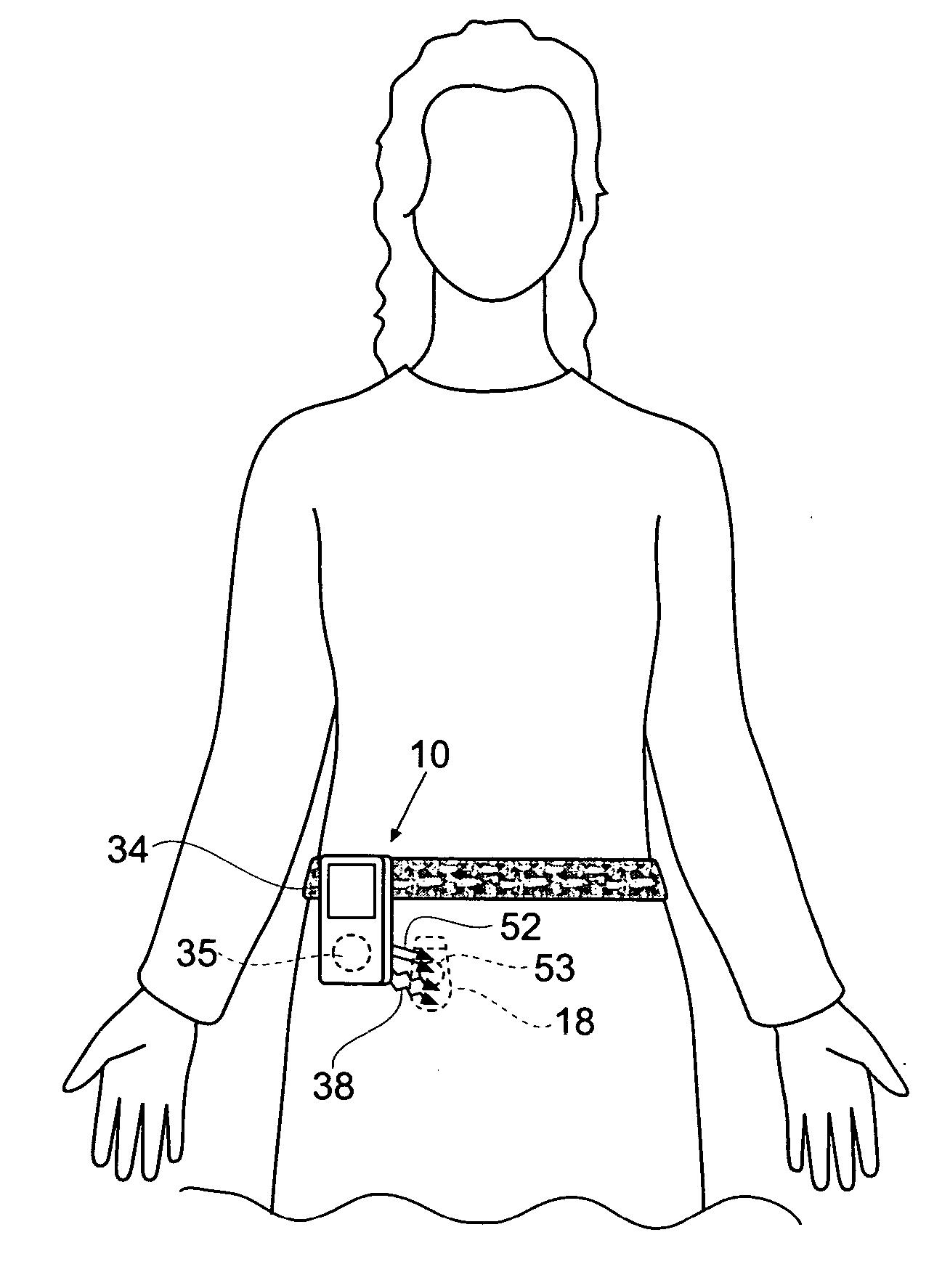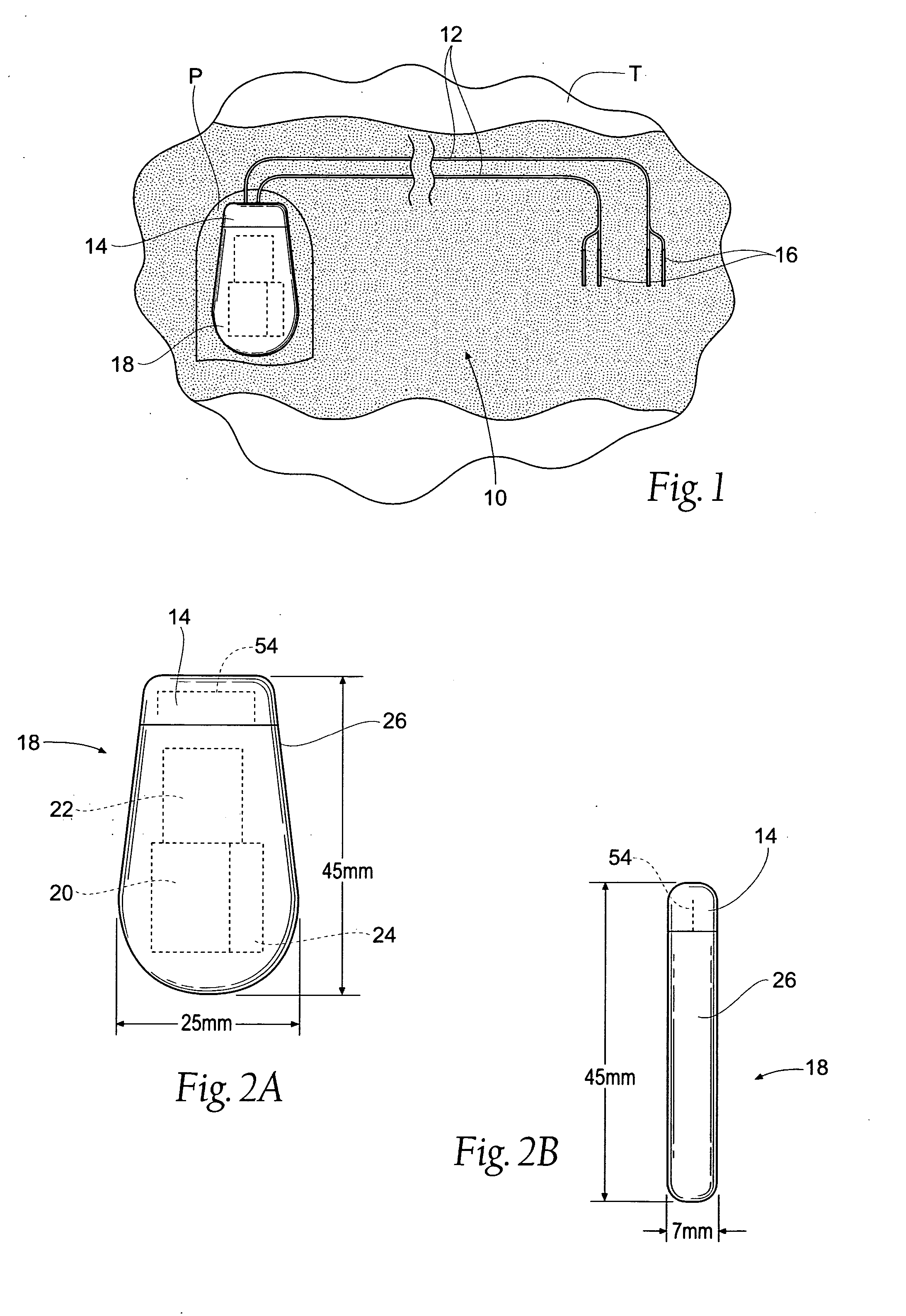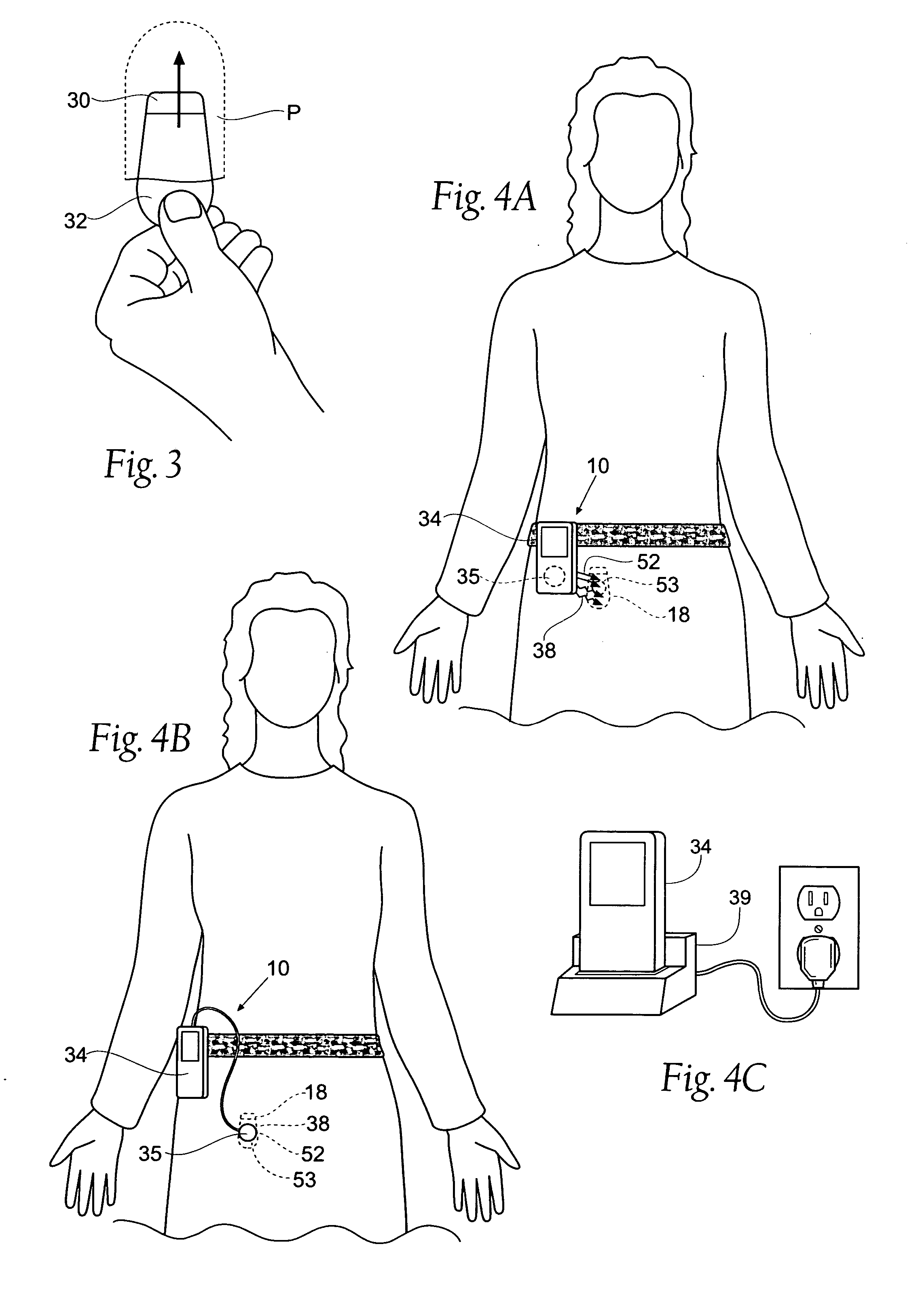[0011] Desirable technical features of the MES processor device include one or more of the following: a secondary power source and / or primary power source for improved service life,
wireless telemetry allowing communications between the implanted MES processor and external equipment, amplification and filtering circuitry for the acquisition of MES from one or more recording electrodes,
electromagnetic compatibility (EMC) and
electrostatic discharge (ESD) suppression circuitry for protection from damage or disruption by ESD or common
electromagnetic interference sources, a lead connection header to provide reliable and easy connection and replacement of the lead /
electrode, one or more programmable microcontrollers for timing and control of the MES processor device functions, including but not limited to the
digitization and digital processing of the amplified and filtered MES signals, and
power management circuitry for efficient recharging of the secondary power source and the distribution of appropriate voltages and currents to other circuitry, all of which are incorporated within a small composite case for improved
quality of life and ease of implantation.
[0015] Yet another aspect of the invention provides improved assemblies, systems, and methods for providing an MES processor incorporating
wireless telemetry.
Wireless telemetry allows the MES processor to wirelessly interact with a clinician
programmer, a clinician
programmer derivative, a patient controller, and an MES processor charger, for example. The
wireless telemetry allows a clinician to transmit operational parameters, regimes, and other setting to the MES processor before or after it has been implanted. The
wireless telemetry also allows the clinician to retrieve information stored in the MES processor about the patient's usage of the MES processor and information about any modifications to the settings of the MES processor made by the patient. The
wireless telemetry also allows the patient controller operated by the user to control the MES processor, both operational parameters and settings in the context of a therapeutic application, or the real-time stimulus commands in the case of a neural prosthetic application. In addition, the
wireless telemetry allows the MES processor to communicate with the recharger (MES processor charger) during a battery recharge in order to adjust the recharging parameters if necessary, which provides for an efficient and effective recharge. In addition, the wireless telemetry allows the operating program of the MES processor, i.e., the embedded
executable code which incorporates the algorithms and logic for the operation of the MES processor, to be installed or revised after the MES processor has been assembled, tested, sterilized, and perhaps implanted. This feature could be used to provide flexibility to the manufacturer in the factory and perhaps to a representative of the manufacturer in the clinical setting.
[0016] Yet another aspect of the invention provides improved assemblies, systems and methods for providing a clinician
programmer incorporating technology based on industry-standard hand-held computing platforms. The clinician programmer allows the clinician or physician to set parameters in the MES processor relating to the treatment of the approved indication. The clinician programmer uses the wireless telemetry feature of the MES processor to bi-directionally communicate to the MES processor. In addition, additional features are contemplated based on the ability of the clinician programmer to interact with
industry standard software and networks to provide a
level of care that improves the
quality of life of the patient and would otherwise be unavailable. Such features, using subsets of the clinician programmer
software, might include the ability of the clinician or physician to remotely monitor and adjust parameters using
the Internet or other known or future developed networking schemes. A clinician programmer derivative (which can be a feature incorporated into the MES Processor charger) would connect to the patient's computer in their home through an
industry standard network such as the Universal Serial
Bus (
USB), where in turn an applet downloaded from the clinician's
server would contain the necessary code to establish a reliable transport level connection between the MES processor and the clinician's
client software, using the clinician programmer derivative as a bridge. Such a connection may also be established through separately installed software. The clinician or physician could then view relevant
diagnostic information, such as the health of the unit or its current
efficacy, and then direct the patient to take the appropriate action. Such a feature would save the clinician, the patient and the health care
system substantial time and money by reducing the number of
office visits during the life of the
implant.
[0017] Other features of the clinician programmer, based on an
industry standard platform, might include the ability to connect to the clinician's computer system in his or hers office. Such features may take
advantage of the Conduit connection employed by Palm OS based devices. Such a connection then would transfer relevant
patient data to the host computer or
server for electronic processing and archiving. With a feature as described here, the clinician programmer then becomes an integral link in an electronic chain that provides better patient service by reducing the amount of paperwork that the physician's office needs to process on each office visit. It also improves the reliability of the service since it reduces the chance of mis-entered or mis-placed information, such as the
record of the parameter setting adjusted during the visit.
 Login to View More
Login to View More  Login to View More
Login to View More 


